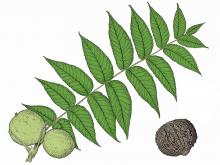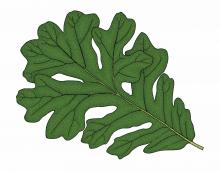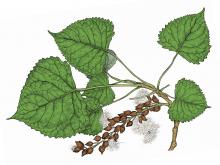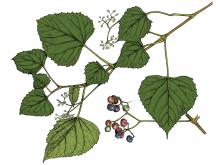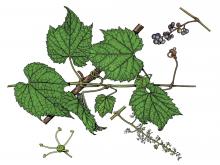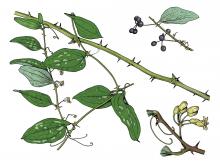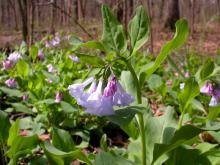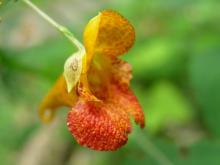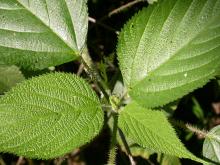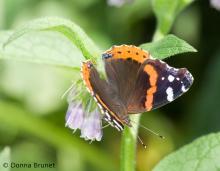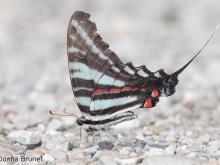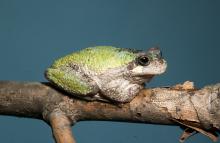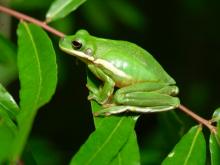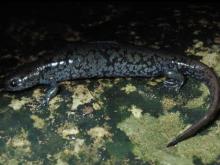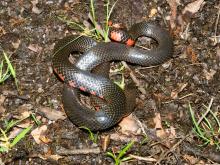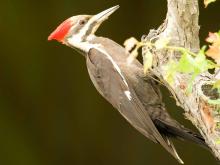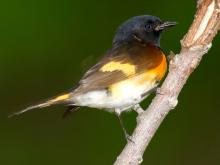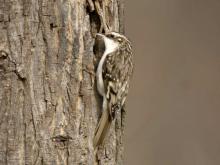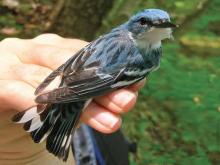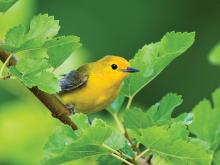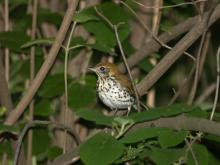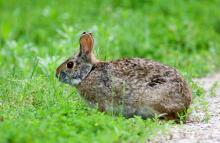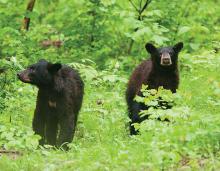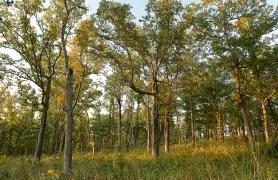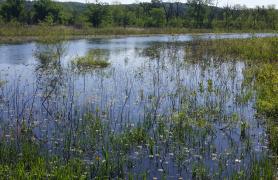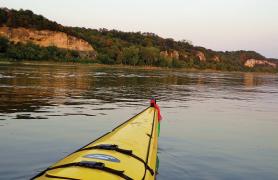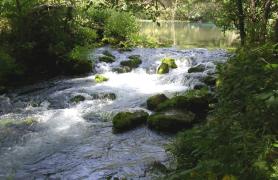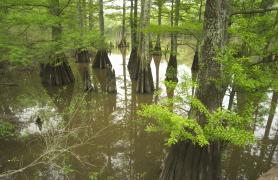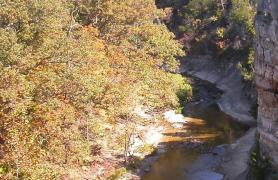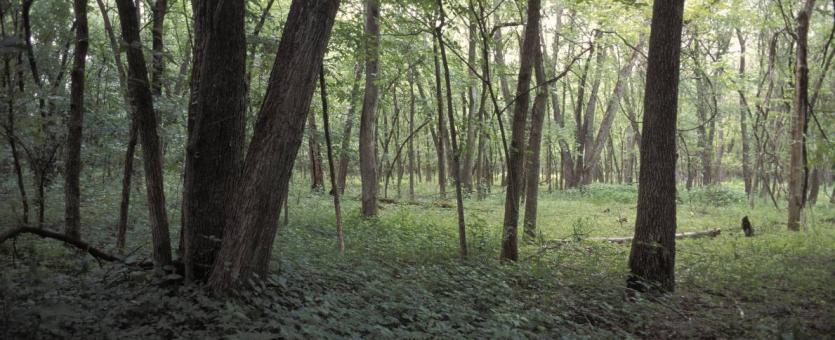
Like all habitat systems, bottomland forests result from a variety of factors such as soil type, hydrology (water flow patterns), and climate. Many plants and animals prefer or require bottomland forest habitats to survive.
Identifying Bottomland Forests
You can use the term “bottomland forest” loosely to refer to a variety of wooded habitats, but true bottomland forests have these characteristics:
- They are seasonally wet areas (for example, from annual spring flooding).
- They are commonly found along intermittent or perennial streams and rivers that flood seasonally or are saturated in fall, winter, or spring when the water table rises.
- Flooding is normally shallow, but it can last more than a month.
- Soils are relatively fertile, deep, well-drained, and alluvial (with soil, sand, and/or rocks deposited by a nearby river or stream); soil pH tends to be moderately acidic to neutral.
- In summer, as with all true forest types, little direct sunlight reaches the forest floor.
- Principal canopy trees include bur oak, pin oak, swamp white oak, sycamore, silver maple, cottonwood, and black walnut.
- Canopy trees can grow quite large, reaching 100 feet or more and often 2 feet or more in diameter.
- The understory is relatively open, with a variety of woody vines and shrubs such as spicebush, pawpaw, buckeye, wahoo, musclewood, and blue beech.
- Ground cover is sparse; common plants include bluebells, jewelweed, violets, ferns, orchids, asters, and sedges.
- An abundance of tree cavities, snags, and downed logs makes these forests very important wildlife habitat.
Bottomland forests are often divided into categories based on the amount of moisture held by the soil: dry-mesic, mesic, wet-mesic, and wet. These subtypes each typically occur in different regions of the state.
Riverfront Bottomland Forest
A special kind of bottomland forest is riverfront bottomland forest (also called riparian forest, or just riverfront forest). It occurs in floodplains along major rivers and streams, notably along the Missouri and Mississippi rivers. These forests are subject to occasional scouring action of fast-moving floodwaters. Characteristics include:
- The canopy, overall, is poorly structured, with variable heights and age classes. This variation corresponds with the gradual movement and development of meanders in the stream. As the stream changes course over time, sediments and organic materials are deposited in (or excavated from) different areas, and tree development follows the deposition (or erosion) of these soils.
- Canopy trees are typically silver maple, bur oak, cottonwood, shellbark hickory, green ash, black willow, sycamore, American elm, river birch, box elder, hackberry, and sugarberry.
- The understory is generally sparse and open, due to flooding. Understory species typically include dogwoods, sandbar willow, peach-leaved willow, Virginia creeper, poison ivy, raccoon grape and other grapes, and trumpet creeper.
- Ground flora can be lush in places, but it is unevenly developed and patchy, due to the scouring effect of high velocity overflow of the nearby river.
- The ground layer typically includes grasses, sedges, and nettles.
- Deposits of leaves and other organic debris and logjams can occur in riverfront forests.
Important to People and Nature
- Many bottomland forests are located between flood-control levees and major rivers. They are crucial buffers for absorbing the scouring impact of high-energy floods. Thus they protect levees, which protect cropland and other areas of interest to people.
- Where they absorb low-energy floods, rich, deep sediments accumulate, creating highly prized, fertile cropland.
- Lowland forests protect water quality by preventing soil from being washed into streams and absorbing nutrients, fertilizers, and pollutants.
- Bottomland forests provide hunting and fishing opportunities. They provide pleasant, shady put-in and camping sites for boaters, rafters, and canoeists.
- Bottomland forests are especially important habitat for migratory birds traveling between North America and the tropics. For example, millions of birds each year follow a north-south route along the Mississippi River.
- Bottomland forests are prime bird-watching locations year-round.
- Fishless pools, depressions that collect rainwater, sloughs, and other ponds that occur seasonally in bottomland forests are crucial for many frogs, toads, and salamanders. In spring, they lay eggs in these ephemeral ponds, and their gilled young grow up in them before the ponds dry up in summer.
- Their plentiful food and shelter — an abundance of insects and plants — and proximity to water make bottomland forests attractive for many species of wildlife.
Bottomland forests can occur anywhere in the state, but they occur in low areas, along rivers and streams and in low valleys connected to them.
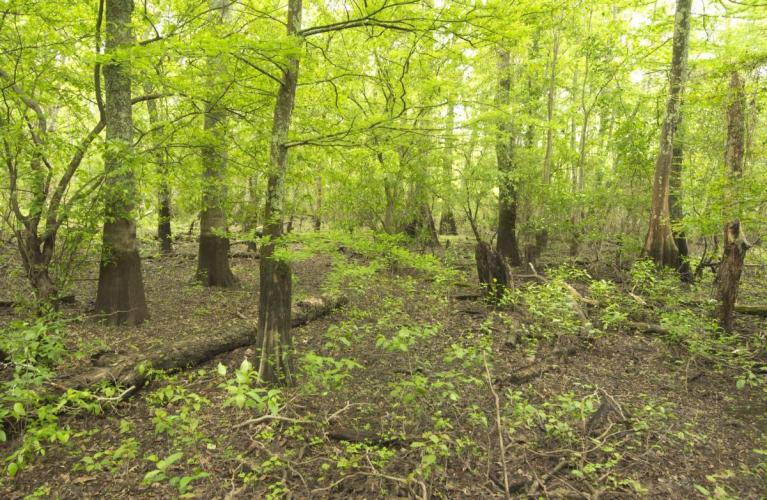
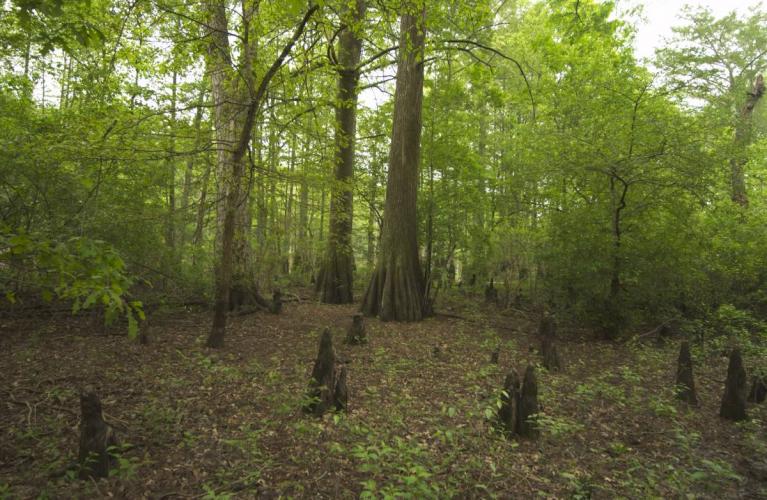
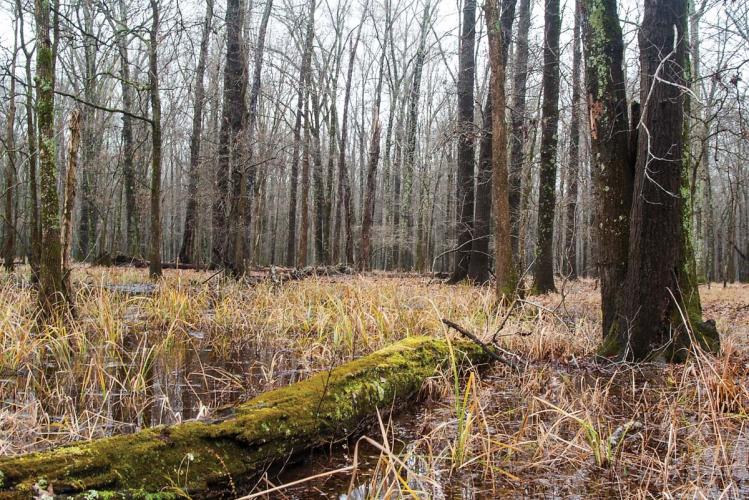
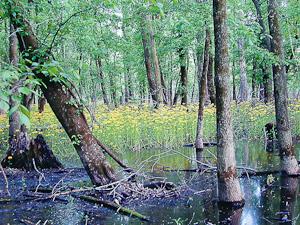
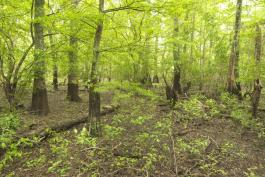
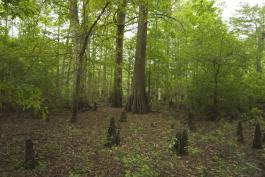
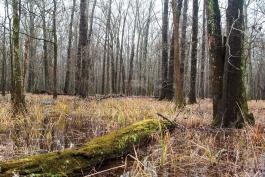
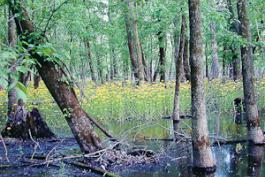
Key species
